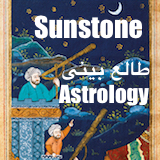The New Yorker:
How “There’s a Riot Goin’ On” helped the musician find a purpose beyond hippie-culture stardom.
By Hanif Abdurraqib
In May of 1971, Marvin Gaye released what many consider to be his masterwork, “What’s Going On?” A song cycle told from the point of view of a Vietnam veteran returning to the United States after serving abroad, having witnessed all manner of suffering, violence, and injustice, it is not an entirely idyllic album. Yet the inquisitive nature of its title, and the question that foregrounds the work, suggests a faith in America held, if not by Gaye himself, then certainly by the speaker he invents to guide listeners through the forest of concerns the album conjures. We are to understand that the soldier in question left one place to go fight in another, and, upon returning home, found no improvement from the conditions he’d left.
By November of the same year, Sly Stone seemed to pose an answer: “There’s a Riot Goin’ On.” At the time that album was released, Stone, who died this week, at the age of eighty-two, was facing a make-or-break career inflection point. He and his band, Sly and the Family Stone, the multiracial, late-sixties-utopian-fever-dream ensemble, had ended the previous decade on a high, with the album “Stand!” garnering overwhelming acclaim. An accompanying performance at Woodstock left their label, Epic Records, eager for a next release. Yet, by 1971, all that had been put out were a couple of singles and a greatest-hits album. Stone missed recording deadlines. His relationship with the band had begun to fray amid creative disagreements, drug use, and Sly’s erratic behavior. Amid all of this, “There’s a Riot Goin’ On” landed as a jolt, as if he’d just shaken himself out of a long slumber, looked upon the country, and realized that he couldn’t stand carrying on in it the same way.
Go to link










Comments